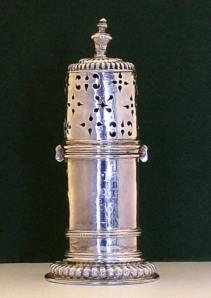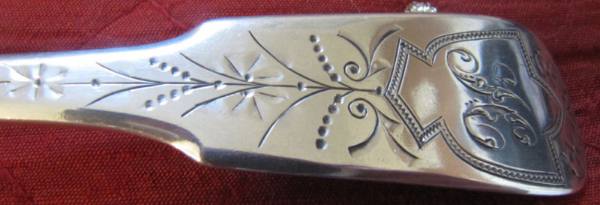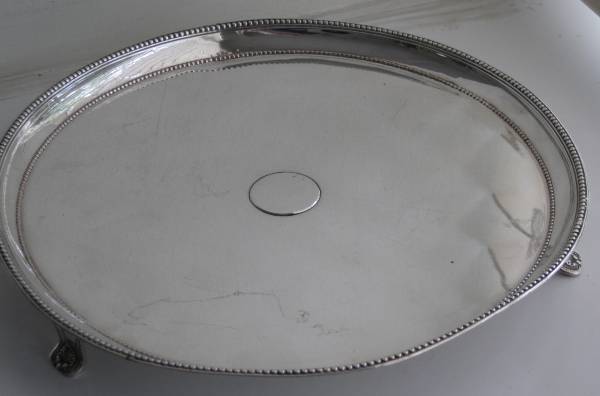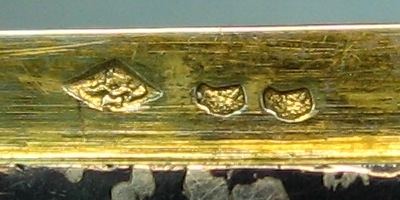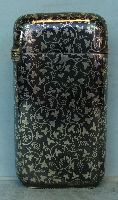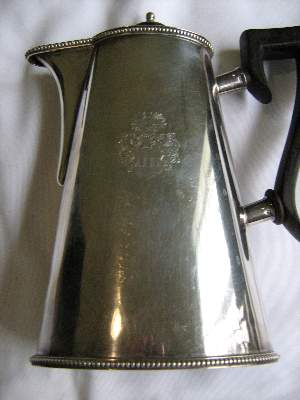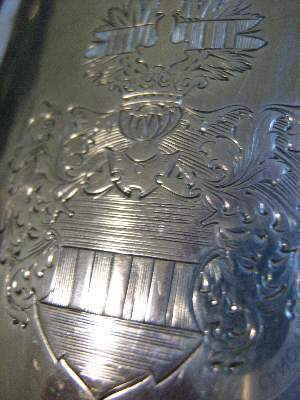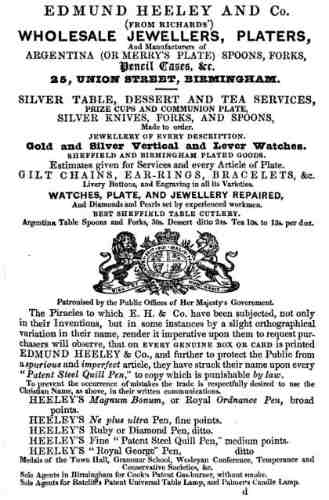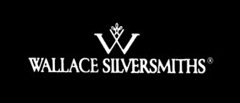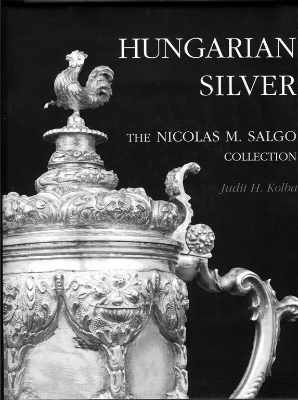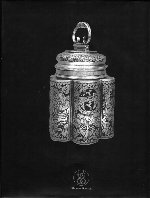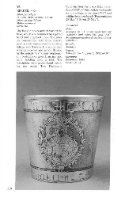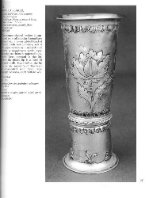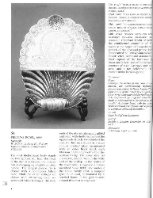 newsletter
# 85 June 2011 newsletter
# 85 June 2011www.ASCASonline.org SITE MAP email: silverassociation@yahoo.it |
||||||||||||
New membersWelcome to new ASCAS members:
Luc Baudry - France
|
|
top page -
page map |
Members' Window # 85

Joanne and Emmett Eldred
present:
|
Mail to ASCAS: e-mail silverassociation@yahoo.it
Mike Miller writes:
...I recently came across this spoon in a batch of silverware I
purchased, and I cannot for the life of me find out where/when
the markings on the back originate.
Can you help me?
Thank you,
Mike
I believe that your spoon is James Leslie, Elgin
over-stamping John Sellar, Elgin. See the Scottish Provincial
section on my web site at
http://www.silvercollection.it/SCOTTISHSILVERSMITHSELGIN.html
Giorgio Busetto
Simon Buxton writes:
...I wonder whether you or one of your members can assist in
solving a mystery relating to a 30 cm Old Sheffield Plate salver.
I attach a photo where you can see an attached central circular
disc about 3cm in diameter on its top surface. This serves no
obvious purpose and could be a nuisance when placing items on
the salver. My guesses are that it was either original, where
its purpose would be to enable an armorial to be engraved
without cutting through to the underlying copper, or added later
for the opposite reason, in other words to hide a pre-existing
armorial! There is no sign of it on the back, so it would not
appear to be hiding a repair. I date the salver to the 1765-1780
period, prior to the use of rubbed in silver shields or the
insertion of more heavily plated discs for engraving. Some OSP
of the 1790 period had silver additions, like the "cut card"
work seen on early sterling silver, to show decorative engraving,
but this is earlier.
Can anyone help on the purpose of the disc?
Thanks
Simon Buxton
***ANSWER PUBLISHED IN JULY NEWSLETTER***
Bruno Bruni writes:
...I'm trying to identify the maker of this French Vesta case.
Any help would be highly appreciated.
Thank you,
Bruno Bruni
***ANSWER PUBLISHED IN JULY NEWSLETTER***
Tonny Geysen writes:
...I have a couple of silver Italian statues. The hallmark is
the 'star' 904MI. The list on your site only goes up to 892 (see
at
http://www.silvercollection.it/SILVERSMITHSMI5.html .
Do you have any information on the 904MI?
It would be greatly appreciated.
Best Regards,
Tonny Geysen
The maker is Arte del Quarzo srl - Via Merlo 3 - Milano. The
firm entered its mark c. 1970 and was out of business between
1990 and 2000.
Giorgio Busetto
Adam Goldsmith writes:
...It is my turn to try and get information from the members of
ASCAS. I have a Russian silver coffee pot from Riga dated with
the 1908/17 mark which has a family crest on it. I have always
wondered whose crest this was and was very excited to see a few
months ago when one of the members gave information on a family
crest. I am hoping that I too could be helped. Hope these
attached photos are good enough to show the coffee pot and crest.
Thanks again for a great newsletter
Adam Goldsmith
Another challenge for ASCAS members!
Giorgio Busetto
"A PAGE per MONTH"
In this column we present a page obtained from makers'
brochures, books, auction catalogs, advertising or whatever
other printed paper, related to silver, that may be of interest
for ASCAS members.
The images will be published at a "low resolution" level and for
private and personal use only
"A WORD per MONTH"
In this column we
present an abstract from a page of the "What is? Silver
Dictionary"
courtesy of


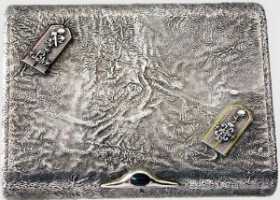
|
SAMORODOKSamorodok is a Russian word meaning that the metal is in its pure or
natural state.
|
"A SILVERSMITH per MONTH"
In this column
we present marks, information and history of silversmiths and
silver manufacturers.
This column is published under the kind permission of Giorgio
Busetto's website


WALLACE SILVERSMITHSThe founder of the firm was
Robert Wallace that, after his apprenticeship to Captain
William Mix, began in 1833 his own manufacture of
Britannia (a pewter alloy) spoons. In 1834 Wallace started the
manufacture of spoons in German silver, supplying his
production to Hall, Elton & Co until 1849.
|
"A BOOK ON MY SHELF"
In this column we present books, new
or ancient, dealing with silver in all its aspects (history,
marks, oddities...). This isn't a "book review" but only a fair
presentation of some useful "tools" that anyone may have in the
shelf of his bookcase.
ASCAS members are invited to contribute to this column
(click to enlarge images)
In the "book on my shelf" of this month Karin Sixl-Daniell presents:

Custom Search
Closing our June 2011 edition of ASCAS Newsletter I hope you have appreciated its content.
Your comments, suggestions and advice will be of great help.
My thanks to Bruno Bruni, Simon Buxton, Jayne Dye, Joanne and Emmett Eldred, Tonny Geysen, Adam Goldsmith, David McKinley, Mike Miller and Karin Sixl-Daniell for their invaluable contributions.
Giorgio Busetto
Secretary
ASCAS is a community of people having a common
interest in antique silver.
|
